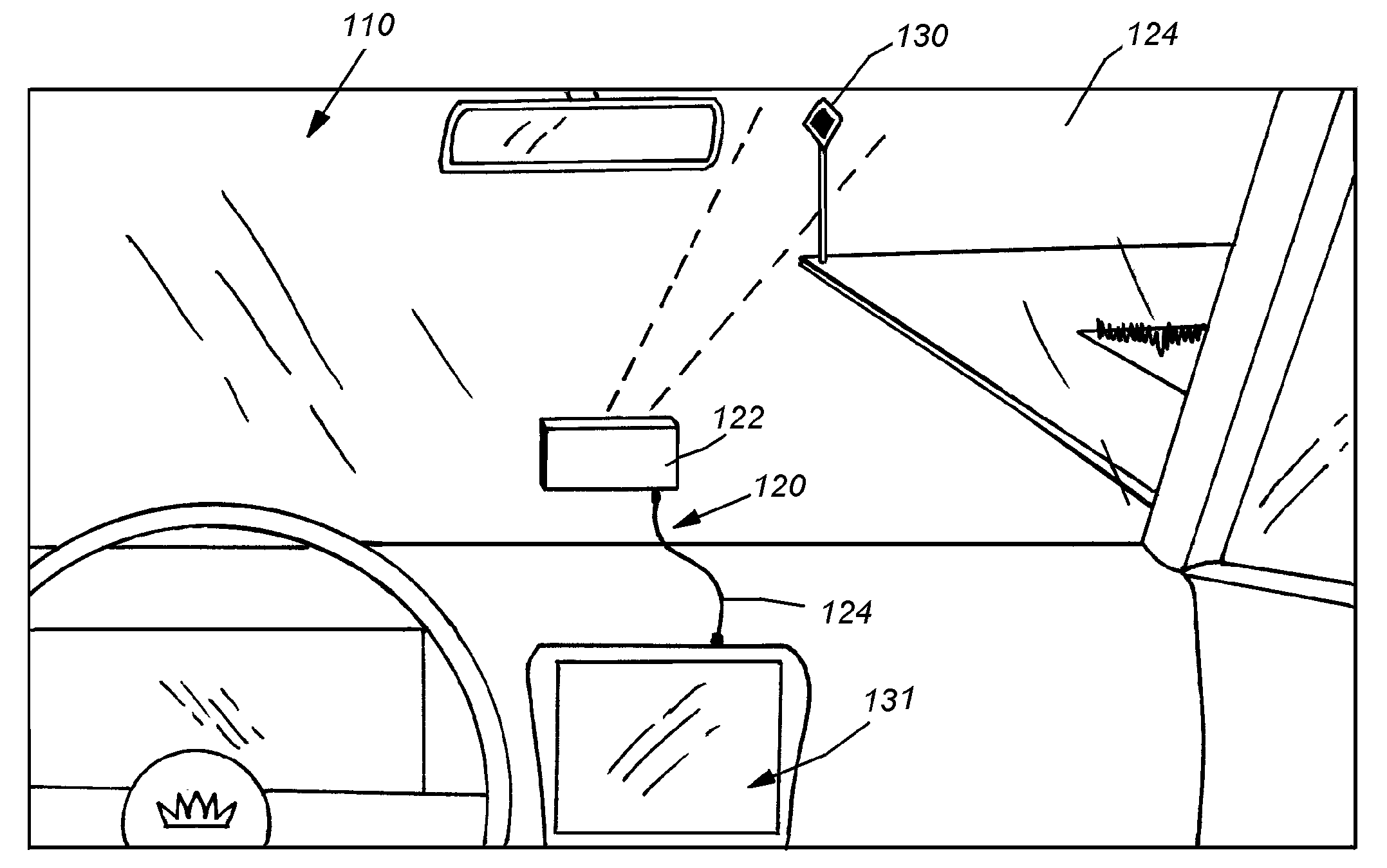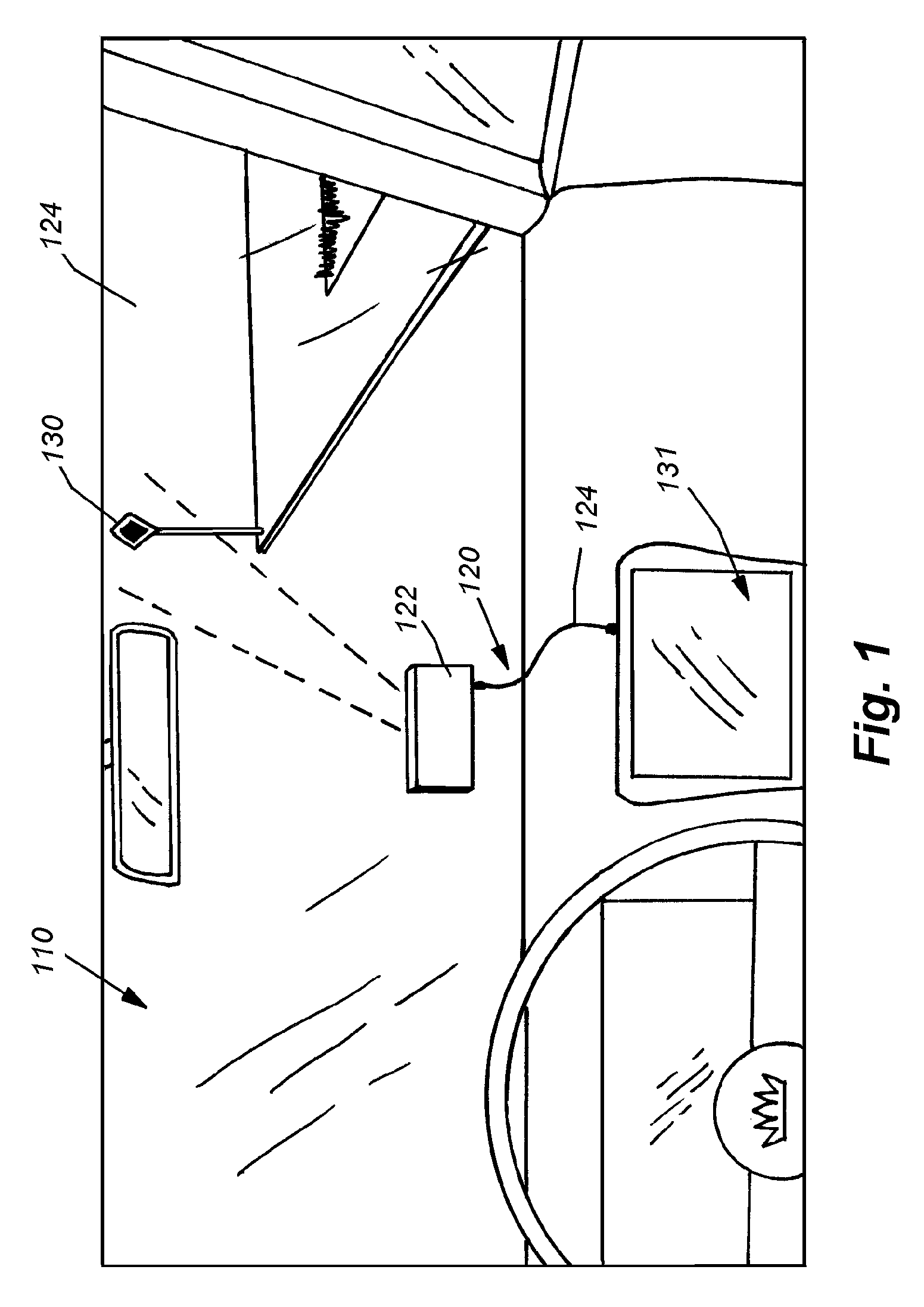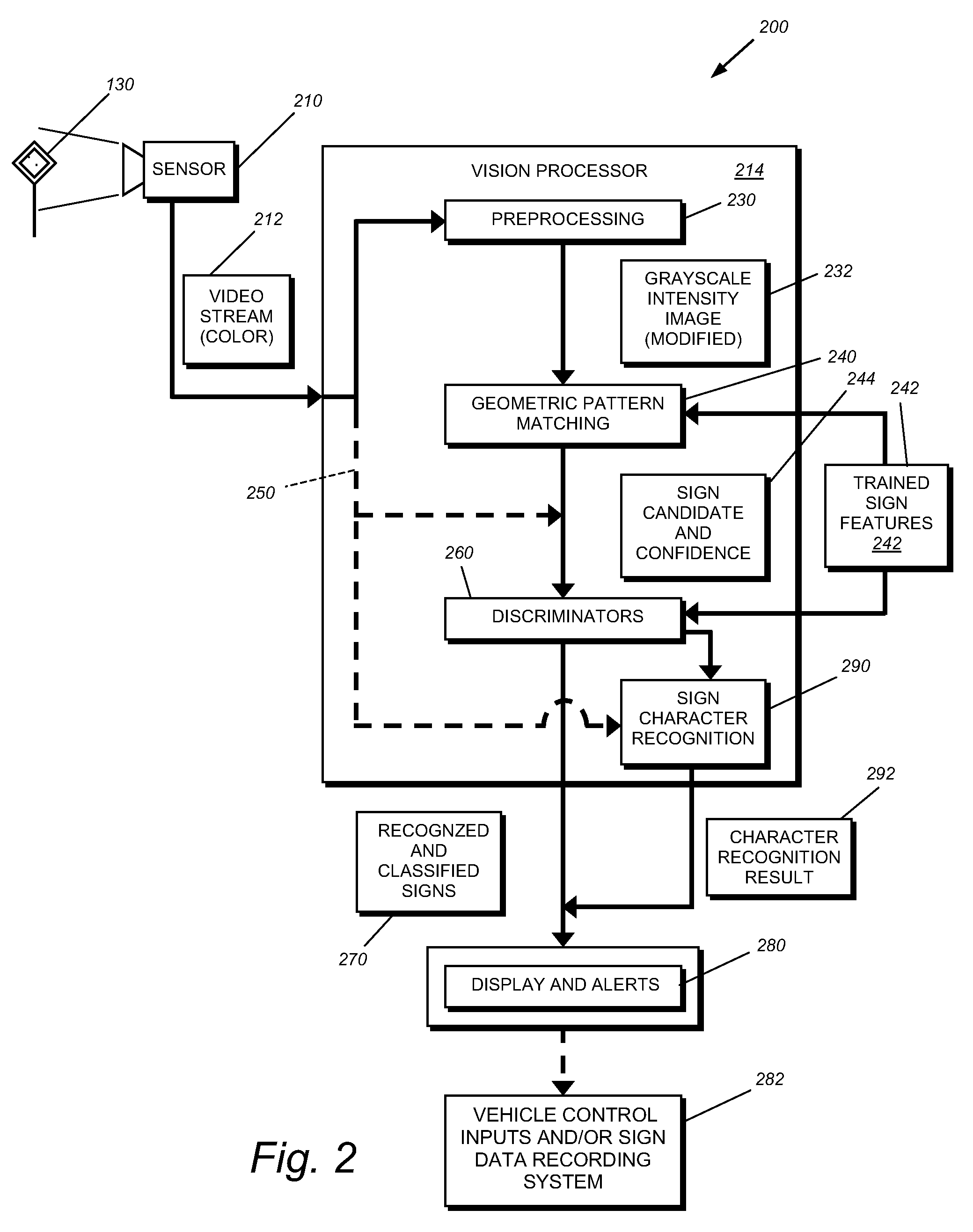System and method for traffic sign recognition
a traffic sign and system technology, applied in the field of camera-based vision systems and pattern recognition, can solve the problems of traffic accidents, affecting the degree to which a sign contrasts with its surroundings, and violations of laws, so as to increase or decrease the confidence of recognition, and improve accuracy and efficiency.
- Summary
- Abstract
- Description
- Claims
- Application Information
AI Technical Summary
Benefits of technology
Problems solved by technology
Method used
Image
Examples
Embodiment Construction
[0023]FIG. 1 shows the interior compartment 110 of a typical vehicle equipped with a traffic sign recognition system 120 according to an illustrative embodiment of this invention. The system in this embodiment consists of a vision sensor assembly 122 that can comprise a housing 122 mounted on the vehicle windshield 124 at an appropriate location and an enclosed camera or other imaging sensor that is generally forward-looking and includes a field of view (FOV) directed so as to image oncoming traffic signs 130 at an appropriate range. In one embodiment, the enclosure can be adjustable to provide the desired direction to the field of view, which is assured to image signs that appear at a predetermined range and at a predetermined location. For example, the sensor can be adjusted to fully image signs within 100 meters. The FOV can be established to view signs on both sides of a road at the predetermined distance from the front of the vehicle. This would assure ample warning of the sign...
PUM
 Login to View More
Login to View More Abstract
Description
Claims
Application Information
 Login to View More
Login to View More - R&D
- Intellectual Property
- Life Sciences
- Materials
- Tech Scout
- Unparalleled Data Quality
- Higher Quality Content
- 60% Fewer Hallucinations
Browse by: Latest US Patents, China's latest patents, Technical Efficacy Thesaurus, Application Domain, Technology Topic, Popular Technical Reports.
© 2025 PatSnap. All rights reserved.Legal|Privacy policy|Modern Slavery Act Transparency Statement|Sitemap|About US| Contact US: help@patsnap.com



